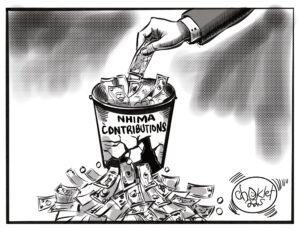Policy Considerations
From our previous discussion in Part 1, it was evident and justified that Zambia clearly needs to urgently develop a policy on mineral value addition if it is to maximize benefits from its mineral resources. The development of a comprehensive value addition policy must provide clearly defined strategies for maximizing current strengths while building long term capacity. Obviously, this requires the participation of many key stakeholders involved in the value chains to deal with some of the challenges discussed previously.
Note that technically, the value addition chain will differ for each mineral commodity due to different costs and benefits that exist across minerals. Policy design must take this factor into consideration. For instance, the value chain of gemstones is limited by its end uses despite a sharp rise in unit value noticeable once a gemstone is cut and polished. Although activities in lapidary processing and jewelry manufacturing have high value addition potential, little is being done. The concern raised by CTPD is the continued export of rough materials by major producers of gemstones and poor local content.
Major value chain activities for other minerals such as copper undergoes different value addition processes depending on end uses. Generally, base metals such as copper and manganese are versatile materials with wide applications and hence offers huge potential in value chain. Equally, industrial minerals which are a backbone of construction and chemical industry of every country, have high value addition potential. For instance, the chemical industry is currently import dependent and the construction industry is on the upswing. Therefore, the potential in value addition of industrial minerals cannot be understated. On the other hand, high-tech minerals such as rare earths, lithium, cobalt, uranium and nickel, may in the short term, have limited prospects for local value addition but offers massive potential once capacity is developed.
Conclusions
1. Note that the role of government is key in providing some of the much-needed interventions generally not attractive by the private sector in driving the value addition agenda. Also important for government to provide targeted incentives to attract private sector involvement in some value addition activities.
2. In developing a mineral addition policy, it is important to take into account differences in value chains of individual minerals. Advisable to develop specific strategies to address value addition challenges for individual mineral commodities.
3. Value addition policy development must prioritize critical minerals (i.e., lithium, copper, cobalt, manganese, nickel and rare earths) due to rising global demand.
4. A policy on value addition of minerals must contend with the fact that it involves many stakeholders (government, private sector, NGOs, donors, foreign investors, etc.) whose roles must be clearly defined
5. On issues of technology transfer – the policy must focus on ensuring the country is not perpetually dependent of imported technologies. The policy must assess the quality of foreign investments and put measures to ensure successful transfer of technology. Zambia being an import dependent country, the policy could initially focus on Import substitution strategies while not losing sight of opportunities in foreign markets.
6. The policy must ensure the continuous development of a skilled workforce to meet the ever-changing labour market.
7. The policy must sustainably support R&D which is key for innovations required in value addition activities.
8. Finally, CTPD strongly believes that in absence of a value addition policy, Zambia will find it difficult to maximize benefits from its mineral resources especially for critical minerals that are currently in huge international demand due to climate change.
About the Author
Dr. Stephen Kambani is a Research Associate at CTPD, with a PhD in Mineral Economics from Montana University (Austria); a Master of Engineering in Mineral Economics from McGill University, Canada and a Bachelor of Mineral Sciences (Mining Engineering) from the University of Zambia.
























